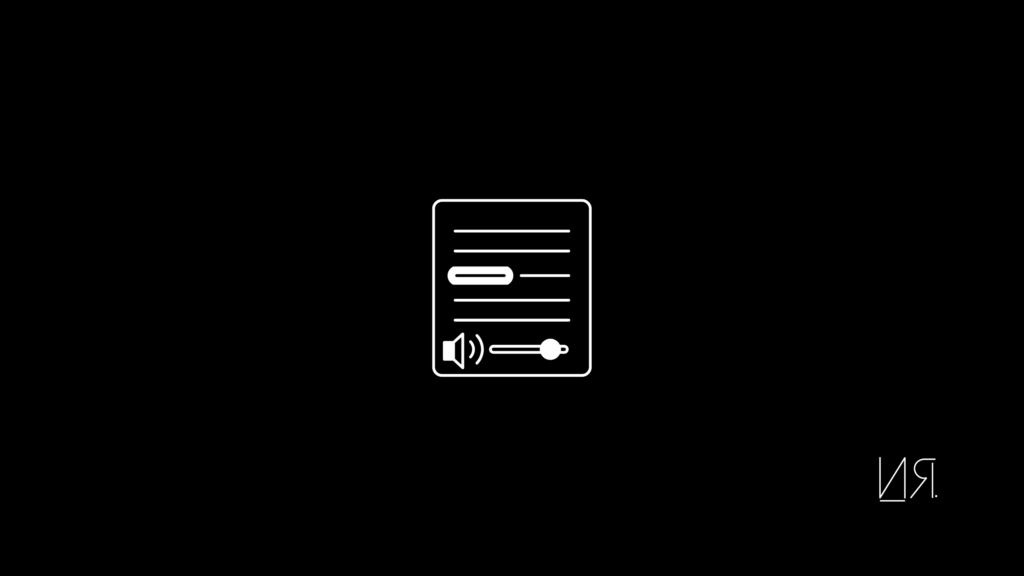Busy times huh?
With busy lives, reading as an enjoyable art is on the decline.
It’s hard for people to add a book into their busy netflix, amazon, hulu, twitter/X, LinkedIn, IG, threads, TikTok watching life.
A boring paper book?
Oh no.
Put that nugget of knowledge away.
Keep it where it should be – in that museum called a library.
Even better – burn that book.
Some are banning books.
The anti-book revolution is raging hot.
Reading a physical book might be on the decline but there’s one storytelling format that’s on the rise.
Audiobooks!
Want to make one?
I’ll show you how I created my last 2 audiobooks.
Audio baby!
Stories help us understand the world better.
In a world filled with distraction, it’s hard to pick up a reading habit.
Phones have captured most people’s attention.
Pop-ups.
Notifications.
Screen mirroring.
A book? Made out of paper? How boring.
“But I read these long letters every saturday” I hear the push back.
OK. OK. My bad. Didn’t mean to trigger you.
I’m just saying that people are looking for bit-sized information.
Everyone is a 2-min expert on TikTok now. With so much information, I understand why our collective attention span is dwindling.
It doesn’t change the fact that a good story provides a flow activity for people.
It’s ordered information that brings context to our world.
While the new-school cool digital peeps might not be prioritizing reading, there’s another format picking up and engaging this attention.
Audiobooks.
If you are interested in getting into the creator economy, looking to build some passive income, or just tell a story that you’ve been itching to tell, you have to provide your stories in a format that people want.
Meet people where they are at.
The more you connect with an audience, the more empathy you build, the more traction you get.
This creates a virtuous cycle that lifts you out of self-doubt and allows you to tell engaging stories and find your tribe.
Audiobooks are changing storytelling.
How to Audiobook in 3 Steps
When I wrote Press Play, I investigated what made music unique as an art form.
I stumbled on a Kendrick Lamar interview on the breakfast club. Kung-fu Kenny from Compton put it clearly that the “voice carries sentiment” of the musician through a song.
You can hear how they feel. This is what an audiobook does for your story.
The voice of the narrator adds sentiment that is missed on paper. This tells more compelling stories, builds stronger bonds, and reaches wider audiences.
Once you learn that you can create your own audiobook – on your own, you’ll be equipped to engage the attention of your audience.
The human voice is enchanted and you will be able to express sentiments that doesn’t come across on paper
You’ll create digital assets that provide passive income and build a path for financial independence.
Here’s how you make your own audiobook:
1. Create the book
You need a coherent story to narrate. So write first.
Some authors do write their books through dictation and narrating, using transcription tools. So it’s possible to narrate all the way to the audiobook.
For this letter, I’m going to focus on creating a book first, then converting it into an audiobook.
Write:
This is a simplified version of the process but to start with, you have to write your story.
If you don’t know where to start, use structure as your friend.
For fiction you can use the “hero’s journey.”
For non-fiction, I’d advise to read some of your favorite authors and model the flow of your writing around theirs.
Writing is usually hard as a solitary experience. Remember, no one gets to read the first draft, just you.
So get something down on paper.
Edit:
There are different phases of the editing process.
1. Development editing: This editor works with you like a coach. They read your first draft and give feedback to improve structure and storyline.
2. Marketing editing: This editor works with you to make sure your story shines and matches what is out there in the field of books.
3. Copy editing: This is the final stage of editing. You get to dot your i’s and cross your t’s. Here you focus on grammar and syntax.
Polish & Publish:
Once you have the content of the book all good to go, you have three more steps to get it ready from publishing.
1. Layout design: This is what takes your book from looking like a regular pdf document to a well-designed read with the right chapter fonts and proper margins.
2. Cover design: People do judge a book by its cover. What’s the point of writing all that, if you can’t get people to grab the book and open the first page.
3. Publish: your book on Amazon or Ingram Spark.
But we are not here to talk about that. We’re here to talk about how to transform this book into an audiobook.
2. Record the audiobook
Just the way you have to sit down to write, you have to sit down to record.
There is no way around it.
You have to do the work.
However, you can pay a narrator to do it for you. You can find them on Audible Creator Exchange (ACX).
If you want to do it yourself, keep reading.
Create good recording space:
Find a quiet place in your house.
Use a room with curtains and carpets (soft material) to reduce sound echoes. Attach audio panels to the wall to improve your studio recordings.
Buy a good microphone and use a pop filter to block out the plosive sounds.
Prepare your voice (it’s the instrument here).
Prepare it each time before reading.

Dos:
- Stay hydrated
- Do voice warm ups
- Take breaks
Don’ts:
- Record within one hour of waking up
- Minimize milk and other dairy products (they cause stickiness in your mouth)

Best recording practices:
Keep this in mind:
- Don’t wear nylon or any material that can be heard
- Don’t shuffle around in your seat (a good mic will pick that up)
- Read your story from an ipad, don’t do it from a paperback (the page-turning can be picked up)
Record with clicker:
Do your recording on a digital audio workstation (DAW).
Here are a few to use:
- Logic
- Audacity
- Audition
Hit record and start narrating.
When you make a mistake, hit the clicker. This will give a visual cue in your recording to know where to edit.
I wish I had known this before I started recording (it will save you hours).
You want to get a good audio recording to make the editing process less tedious.
Spend a good amount of time creating your recording space and using good equipment, so that you have good material to choose from.
3. Edit and publish the audiobook
If creating an audiobook was like cooking, recording will be making sure you have the right ingredients, editing is the process of putting those ingredients together.
If your ingredients are sub-par, no matter how much you spice it up, your meal will still be sub-par.
So get your recording right.
Edit in a DAW:
Depending on your ability with digital audio workstations, you might want to do this yourself or outsource the editing process.
If in doubt, outsource it, unless you really just want to learn.
You can find audio engineers on places like Upwork and Fiverr.

Re-record if necessary:
Take a listen to the edits. Make sure no mistakes are left in.
There will likely be spots you didn’t catch.
Re-record the section and paste it over in the DAW.
Meet audible standards:
Once you are happy with the recordings, you have to master your audio files to meet Audible’s sound quality standards.
This can get tricky particularly the RMS decibel boundaries.
When in doubt, outsource to an audio engineer.

Finalize cover design:
“People don’t judge books by the cover”
That’s not true.
They do.
Make sure you adapt and finalize your cover design to match the square dimension requirements on Audible.
Upload to ACX:
Once you have all your chapters (audio files) and your cover design.
Head over to Audible Creator Exchange (ACX) and upload each recording and the design.
That’s it.
Wait for Amazon to approve your story.
For me:
- Press Play (1st book) took 6 weeks.
- Toffy’s Divide (2nd book) took 2 weeks.
Once approved, sit back and share your story with the world.
If you’re vain like me and have Alexa, say: “Alexa play “name of your audiobook””
BOOM, your voice can reach people at scale now.
Slight Nuance (Difference between Fiction and Non-Fiction)
I have now done this for two different genres of books and I can tell you that the fiction recording was more challenging.
Here’s why.
With non-fiction, I could use one tone of voice and I was simply narrating.
With fiction, you have to do some voice acting. My book had 8+ strong characters and I had to switch up the tone of my voice and cadence for each of their dialogues and inner thoughts.
Keep the style of narration in mind as you go down this path.
Timeline
Here’s the total production time for 405 pages of Toffy’s Divide.
- Recording: 27 hours
- Editing: 60 hours (will have been shorter if I used a clicker)
- Mastering: 20 hours
- Procrastination: A lot of months in between each steps
- Final product: 11 hours of published story on Audible
There’s a 10x production effort for every hour of published story (at least for me).
Bonus step: Marketing your audiobook
Oh yeah, we’re not done yet.
It is called the creator “economy” for a reason, you still have to deal with economics.
Supply and demand.
All that good stuff.
You already have a digital asset to supply, but where is the demand?
Well, you have to generate it.
In this economy, you have to have an equal dose of creating and sharing.
The most important thing you can do is build a contact list. To do that, you might need to build a following on one of those tech suckers that I mentioned above.
But don’t rely on them. You are just “renting” their audiences. Build a list, so you have direct access to your community.
If you are at zero, that’s fine. That’s where everybody starts.
Find 10 friends and add them to your list and build from there. The more you share your valuable work, the more they share it with their network and so on and so forth.
Create a retail sample:
This comes along as a requirement to upload on ACX.
You have to create a snippet of the book (5-min maximum) that prospective listeners can listen to decide whether they want to add your book to their library.
Find an interesting part of the story that captivates the audience and keeps them wanting more.
A safe rule of thumb is to take the beginning part of the story.
If you’ve followed some good storytelling principles, the beginning part of the story will be a good hook for the remaining.
Chop it up for different formats:
Make the retail sample work for you.
Chop the 5-minute clip into smaller pieces and share it across social media.
Make sure you include the link (in the comments) to your audiobook to get people that are interested.
Amazon does not give you information on the people that order your audiobook.
Provide an extra incentive for them to join your mailing list after purchasing your audiobook.
With a mailing list you can always stay in contact.
It’s great to have a digital story but don’t forget to find your listeners. They are out there.
Final Thoughts
Audiobooks are a growing class of digital assets.
It is a great format to get your story to the world.
It engages people’s attention and you get to add sentiment to your story through narrations.
The cool thing is that you can do it all on your own by following the steps above and getting decent equipment to get your voice out to the world.
If you believe you have a story in you, the reality is that you actually do. If you think you should be a writer or entrepreneur, you are probably right.
Don’t let that flame die. That story is needed.
Go tell it.



